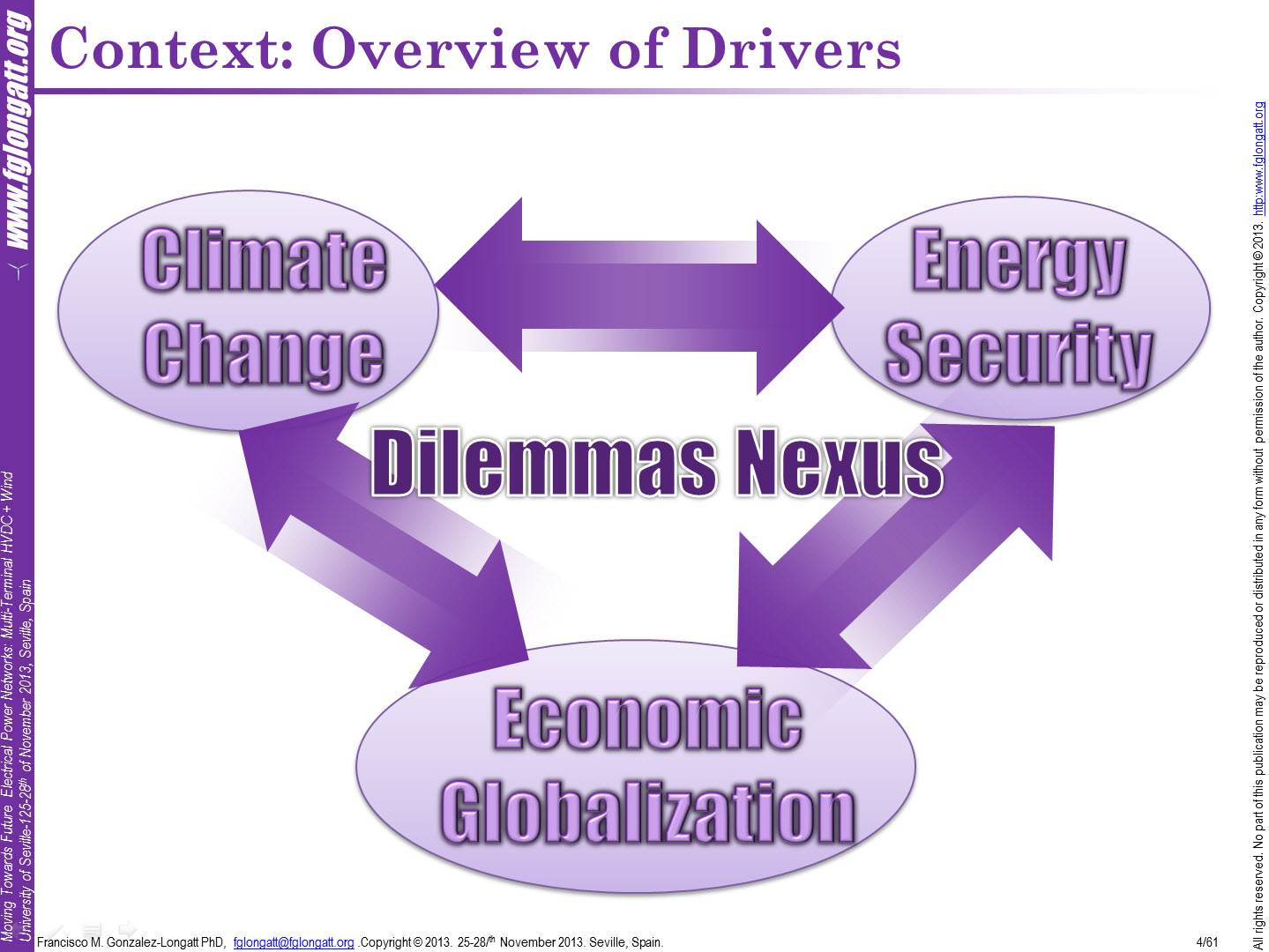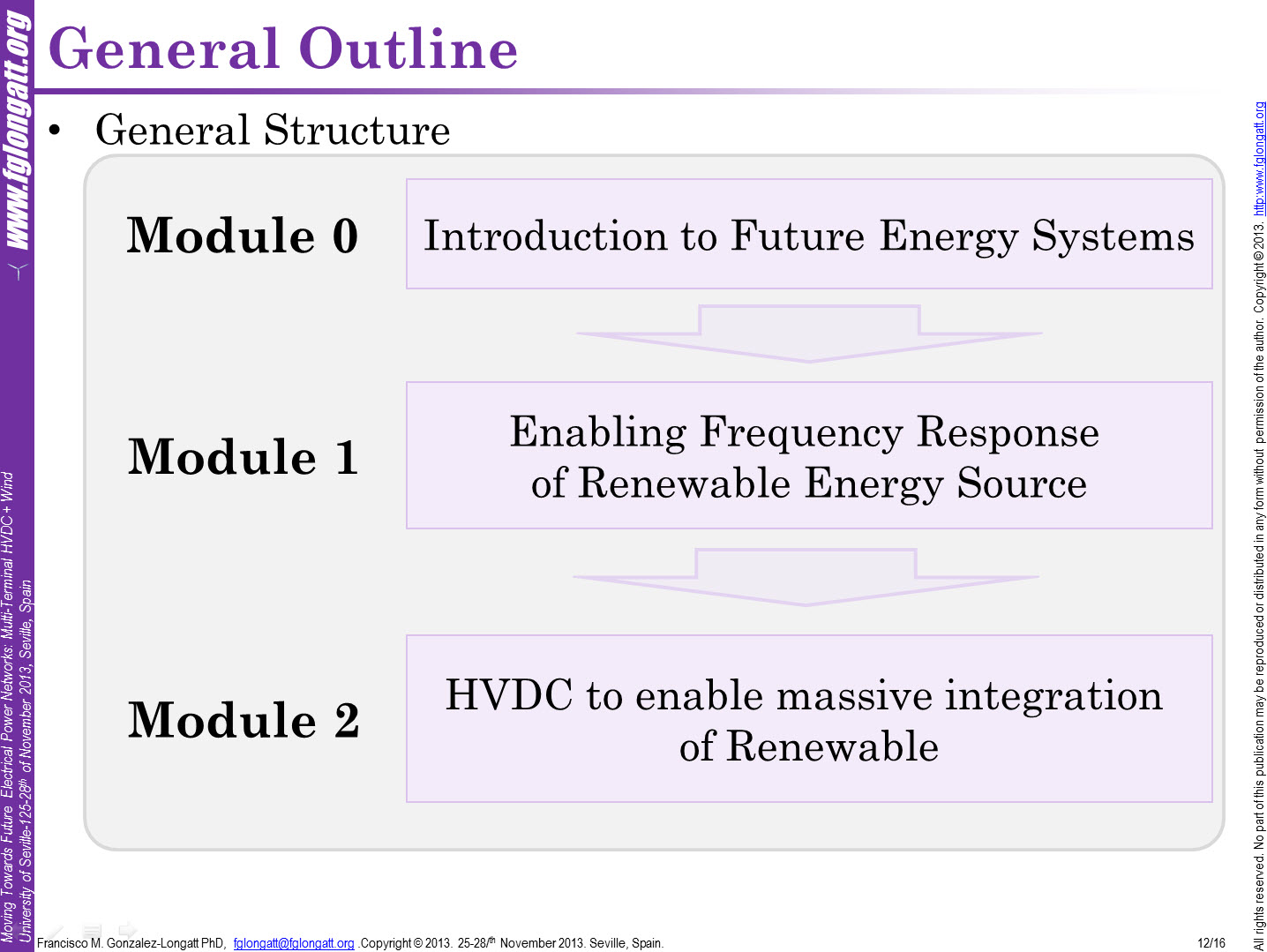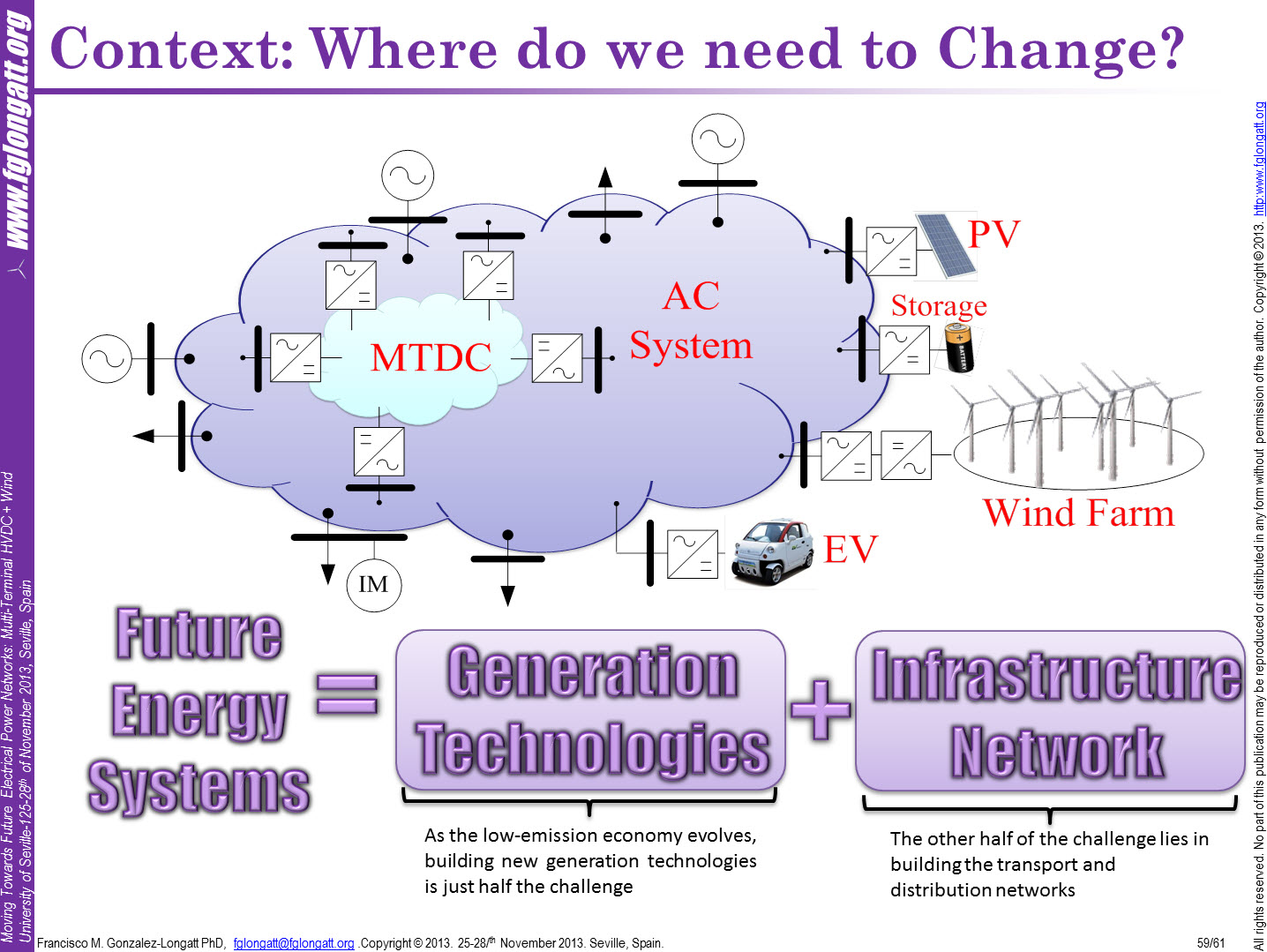|
Moving Towards Future
Electrical Systems: Multi-Terminal HVDC + Wind Power
25-28th November 2013
University of Seville
Seville Spain

Looking beyond 2030,
the challenges for electricity networks are likely
to increase. There exists general consensus that the
challenges of climate change, economic development
and system security.

The ability to
accommodate significant volumes of decentralised and
renewable generation, require that the network
infrastructure must be upgraded to enable smart
operation.
The future
electricity networks and its potential issues
require looking beyond the existing research
frontiers irrespective of the disciplinary
boundaries.

The objective of this
seminar is to present the fundamental aspects about
system frequency control and inertia response
schemes for the future electrical systems.
Dr Gonzalez-Longatt
is very pleased to present this seminar in
University of Seville Spain, 25-28 November 2013..

General Outline:
All presentation can be
downloaded, however, you would be requested several
passwords during process to open the documents. You
must contact Dr. Francisco M. Gonzalez-Longatt:
fglongatt@fglongatt.org
requesting those passwords.
Module 0:
Future Energy Systems
Context: Overview of
Key Drivers Climate Change Energy Security Economic
Development Changes and Challenges Massive
Integration of renewable Energy Storage Systems
Pan-European Transmission system
Module
1: Enabling Frequency Response of Renewable Energy
Sources
0. Agenda
Part I: Overview
of System, Frequency Response Introduction Frequency
Control in Classical Power Systems System Frequency
Response (SFR)
-
Introduction
-
Frequency Control in Classical Power.
Concepts associated, controllers involved
(inertial response, governor response, and AVR),
Requirements: Why frequency response is needs?
Providers: generator-side, Demand-side,
Protection schemes: Under frequency load
shedding. Real-life examples.
-
Systems
System Frequency Response (SFR). Models and
techniques used for frequency stability
analysis. Practical examples: MATLAB and
DIgSILENT simulations.
Part II: Inertia
Response Schemes Synthetic or Artificial Inertia
Frequency Response of Wind Turbines/Farms
-
Synthetic or Artificial Inertia. Concepts
and implementations, requirements of synthetic
inertia.
-
Frequency Response of Wind Turbines/Farms.
Wind turbines technologies, Wind turbine
controllers: Inertia Controller, Droop Control
and De-loading control, Commercial concepts: GE
WindINERTIA, Enercon WINDBLAST, Wind farm level
controller: Local and Central. Practical
examples.
Module
2: Enabling Frequency Response of Renewable Energy
Sources
-
Introduction into HVDC Systems
-
HVDC Technologies: Natural Commutated
Converters, Capacitor Commutated Converters (CCC),
Forced Commutated Converters. HVDC
Configurations, Classification of DC links, Line
commutated current source converters (LCC),
Voltage source converter (VSC), Comparison of
LCC and VSC, Multilevel Converters, Modular
Multilevel Converters (M2C).
-
Components of an HVDC Transmission System.
-
HVDC Control Systems: DC System Control:
Basic philosophy. Power-flow control, Frequency
control, Power/frequency control. Different
control levels. Overall control co-ordination.
Hierarchical power control.
-
Integration of Wind Power Technologies Using
HVDC
-
Enabling the HVDC systems to deliver
frequency response. HVDC technologies,
Multiterminal-HVDC: Local and central
controllers. Wind Farms connected to HVDC to
deliver frequency response. Practical examples.
Sent by:
Dr. Francisco M. González-Longatt 1st December 2013.
www.fglongatt.org
Comments:
fglongatt@fglongatt.org |